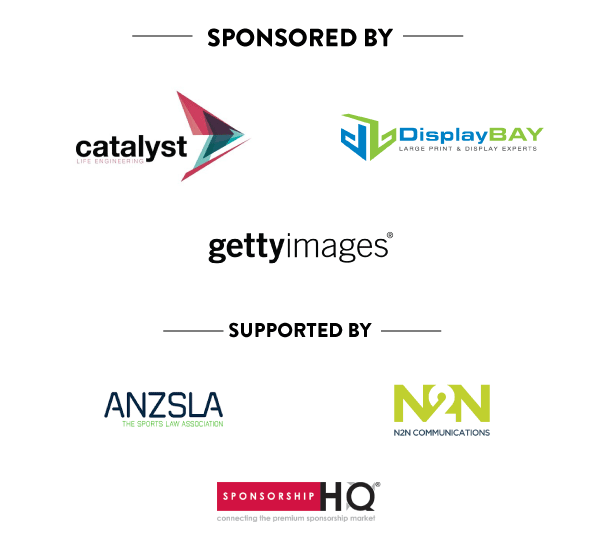“The Melbourne F1 Still Remains Australia’s Top Event For Brands”

Despite falling interest, declining tickets sales and Sydney even trying to nick it, the Melbourne F1 remains one of the nation’s preeminent events and arguably one of the top three races on the global F1 circuit.
That’s the view of Steve Madincea (pictured below), CEO of the London-based PRISM (part of WPP), a marketing company that specialises in, amongst other things, hooking brands up with F1 teams and drivers.
Madincea is in Australia for Sunday’s annual petrol-head festival around Melbourne’s Albert Park. One of the main reasons for Madincea’s visit was to announce a partnership between the Red Bull F1 team and famed British marque Aston Martin. Chief technical officer at Red Bull, the legendary Adrian Newey, is to design a supercar alongside Aston Martin rumoured to come with a $US5million price tag and limited to just 30 lucky drivers worldwide.
This year Melbourne celebrates 20 years of hosting the F1 and Madincea – a seasoned veteran of the F1 circuit – says the organisers are “doing a pretty bloody good job quite frankly”.
“When I travel around the world in F1 circles, whoever you talk to be they journalists or captains of industry or the teams, if you say, ‘Pick your favourite three races’ Melbourne will always be in it. Always,” Madincea told B&T.
“And you’re right, in terms of the track itself, it’s nothing special. So it has to be more to it; it’s the city, it’s the event, it’s how well it’s run, it’s the fans, so that’s where you have to give Melbourne a lot of credit.
“For brands and sponsorship, particularly from a global perspective, the F1 remains the top event in Australia.”
But what about F1’s perceived blokey culture? Madincea agreed that it can be a problem but is an image the that the governing body has worked hard to rectify over the past few years.
“But take football around the world, it’s still very male-skewed. But yes, F1’s not as good at other sports like, say, tennis that has far more female fans. Yes, F1 does have more work to do, but I’d say its biggest problem – like most sports – is attracting the new, younger generation of fans,” he said.
Madincea says in these more parsimonious times when brands a looking for more for less, F1 can give the exposure without the price-tag of a worldwide advertising campaign.
“F1’s always been expensive (for brands to be involved with) but I think if you know your way around F1 you can get substantial returns. Do brands want a global advertising campaign and a costly TVC that goes with that? Or you can do it far more efficiently by backing teams or drivers.
“Formula One – because it’s a global sport – allows brands to target key markets. And now with China coming on it’s an even more engaging platform for brands. It can cost pennies and the dollar versus a global advertising campaign. F1 can be a non-brainer for a lot of brands,” he said.
Madincea agreed that data and ROI meant many CMOs – particularly for the big, global brands that pay mega bucks to sponsor F1 – wanted to see how their spends were translating to sales.
“CMOs are far more data driven and ROI and ROO concerned than ever before,” he said.
“So if you can’t bring them a solution that isn’t data-supported and isn’t strategically grounded you can’t even get into their office. CMOs want a business case, that’s their language, that’s what they speak about; you have to give them a compelling argument.”
Love everything sports? Make sure you come along to our Ministry of Sports Marketing conference!

Please login with linkedin to comment
Advertising Standards Bureau Best Places to Work in Asia Deepend Frontier Media New developmentsLatest News

TV Ratings (18/04/2024): I’m A Celebrity Wins Prime Time And Key Demos
Aussie viewers can be a harsh lot at times. Only days after Ellie Cole bled her heart out, she has been sent packing.

Effie&co Launches New ConnectAsia Division To Help Aussie Brands Market To Asian Consumers Overseas & At Home
Not provided is advice on using chopsticks and not spilling ramen down your shirt.

Cashrewards Sets Out Stall For New CMO
Thinking of applying for the Cashrewards CMO gig? Here are some insider tips that, yes, are tantamount to cheating.

‘I Ask For The TV Industry To Stand Up And Defend Itself’ – Seven Boss James Warburton Steps Down
The Seven supremo heads for the exits after five years. Here's hoping the Spotlight team organised the farewell bash.

Poh! Jamie! Adriano! Paramount ANZ reveals its tasty plans for this year’s MasterChef
It's your fan's guide to this year's MasterChef! Although no tips on how to pronounce crudités or use a un fait-tout.

Dentsu’s iProspect Partners With MOOD Tea Ahead Of May Campaign Launch
We love a Mood Tea here at B&T. Although we do store old screws and nails in the International Roast caterer's tin.

Opinion: When Culture Starts Eating Itself: Navigating The Age Of Self-eating Nostalgia
Born boss David Coupland asks is adland going through a nostalgia period? But please, no repeats of Best Of Red Faces.

Who’s Going To Cannes?! The TikTok Young Lions Winners!
It's Aussie adland's next gen! They're off to Cannes with high hopes of bringing back a Lion & a foot-long Toblerone.

Adobe Launches Express Mobile App With Firefly AI
Want to be the coolest kid at Friday staff drinks but forgot your retro Nikes? This new Adobe wizardry may do the trick.

ThinkNewsBrands & IMAA Extend News Publishing Education In Brisbane
Industry duo takes its publishing roadshow to Brisbane. Was disappointed no male attendees were wearing walk socks.

B&T Chats With Wavemaker’s Provocative Pioneers On Their Cross-Pacific Sojourn
B&T TV heads to Wavemaker's Sydney digs to interview two staffers from its New York & LA digs. If that makes sense?

HoMie & Champion Launch “Give One. Get One” Campaign Supporting Youth Homelessness Via Town Square
Much like the fête's prized chutney wears a blue winners sash, so too should this top initiative from HoMie & Champion.

Thinkerbell Takes Us Back To Summer In Latest Work For XXXX
This beer ad wants to take you back to summer! Just minus any chance of a shark attack on your morning bus commute.

Cannes Lions Unveils 2024 Programme Featuring Queen Latifah, Jay Shetty & P&G’s Mark Pritchard
Are you one of the lucky ducks heading to Cannes in June? Check out the headliner acts you'll be queueing hours to see.

Scroll Media Recruits Costa Panagos From Twitch
Costa Panagos set to bring South American flair to the Scroll offices. Assuming that he is, indeed, South American.

Year13, Microsoft & KPMG Australia Launch AI Course For Gen Zs
Born around the 2000s? Need to amp up your AI creds? This guide's for you (although it's not really that age specific).

General Motors Snares Heath Walker From Scania
Do you rage about oversized American cars on our roads? You need to bail up Heath Walker at parties & industry events.

VML Launches New “Envoyage” Brand For Flight Centre
VML unveils new brand for travel operator Flight Centre. Alas, no sign of those paid actors pretending to be pilots.

Subaru Places Media Account Up For Review
Subaru puts media up for review, as adland journos get set for mandatory "agency drives off with..." headline.

TV Ratings (17/04/2024): Contestants Faced With Harsh Realities As Alone Australia Heats Up (Or Cools Down)
Alone still doing the business for SBS. Overly long train journeys not doing the business, but they persist anyway.

Ben Fordham Loses Number One Spot As Ray Hadley Celebrates 156th Ratings Win
The radio numbers are in! Discover who's off for a boozy lunch today & who's waiting for the dreaded HR death knock.

Gourmet Ice Cream Brand Connoisseur Launches New “Thrill Your Senses” Iteration, Via SICKDOGWOLFMAN
Rattling the old "truth in advertising" adage comes this ice-cream spot full of noticeably thin people.

Paramount’s Global Sales Boss: ‘Australia’s Converged Model Is A Blueprint For How I’d Like All Of Our Markets To Be’
Paramount's global sales boss gives local sales ops the thumbs up. Didn't weigh-in on the Lisa Wilkinson debacle.

TikTok Starts Testing Its Instagram Rival In Australia
In exciting news for piano playing cats & brattish pranks in shopping centres, TikTok unveils its Insta rival plans.

Man Wrongly Named By Seven As Bondi Killer Hires Lawyers
Struggling to save for a house deposit? Why not get wrongly identified by Sunrise!

Smartsheet Appoints Indie Agency Sandbox Media To Its Media Account
Can't stand your colleagues? Like to dob them in when they miss a deadline? These work management platforms are ideal.

Boss Not Letting You Come To Cannes In Cairns? Use This Business Case To Convince Them!
Stingy boss won't spring for a ticket to Cairns? Add this to your persuasive argument repertoire. Or grovel.

Alt/shift/ Brisbane Builds Portfolio With Ausbuild Creative, PR, Content & Social Account Win
The Brisbane comms/PR agency lands constructor Ausbuild. Also hoping for a discount on its new glass conservatory.

Young Guns Versus The Old Guard: Who Adds More Value to Our Industry?
Cannes In Cairns poking this hornet's nest in a lively debate. Just so long as the oldies can get up the stairs.

70% Of Aussies Don’t Have Green Power Plans ENGIE Says In Major Brand Campaign Via HERO
Are you the notorious "light leaver on-er" in your flatshare? Quell any infighting with this green energy news.

PrettyGood Launches Offering Brand & Media Solutions For Australasian SMEs
B&T applauds the charitable nature of this new agency. Although we'd hate to see it impact any Chrissie present sends.

A Blunt End: Dolphins Medicinal Cannabis Sponsorship At Risk
Yes, it's another NRL drug story. Yet, thankfully it doesn't involve coke in Kuta during the off-season.

Slew Of New Creative Hires At Leo Burnett Australia
Ahhh, all black! The outfit of choice for agency creatives, David Jones staff and everyone in Melbourne.

Under Armour Unveils Local “Live in UA” Campaign
American apparel brand set for yet another tilt at the Aussie market, as Nike declares "we'll see about that".

Pepsi Launches New Look, Refreshing Classic Fashion Staples Via Special PR
Are you always the bridesmaid, never the bride, as the old saying goes? How do you think Pepsi feels?

Pure Blonde Returns To A Place Purer Than Yours In New Campaign Via The Monkeys
B&T's always been a huge fan of the 'drink yourself thinner' diet plan. So big thanks to Pure blonde, vodka & tequila.

